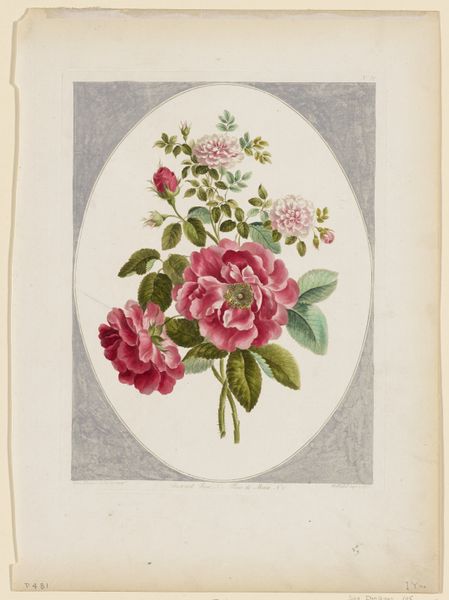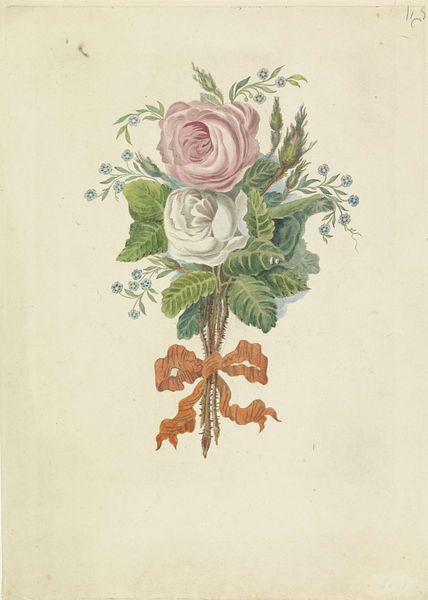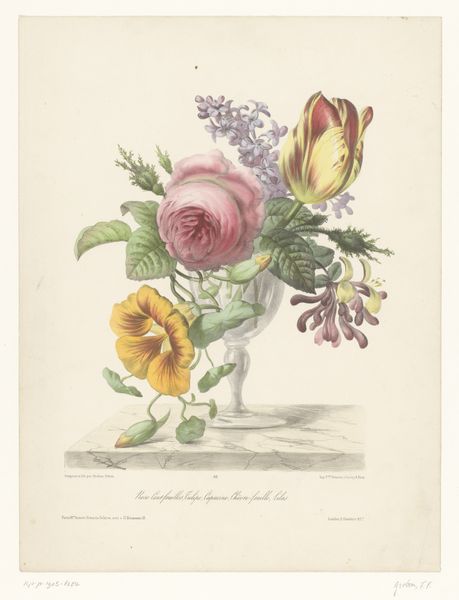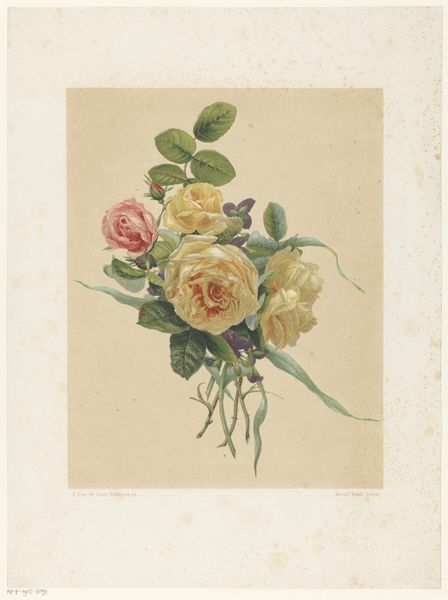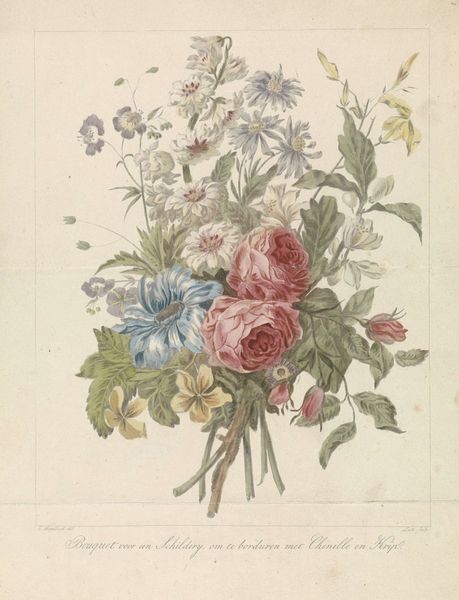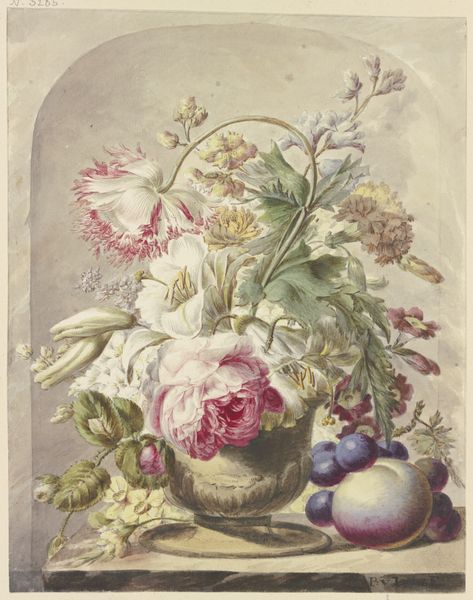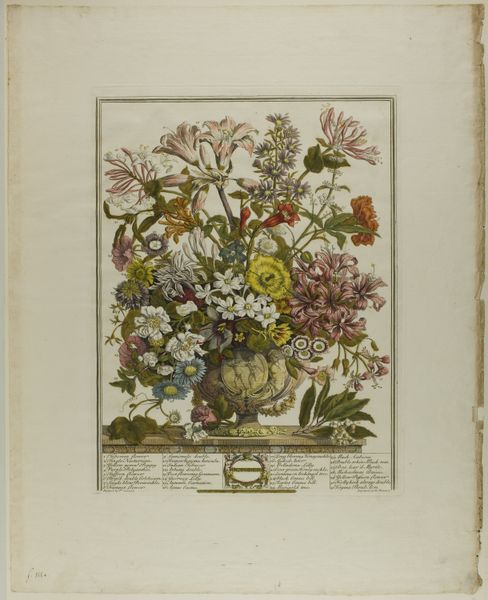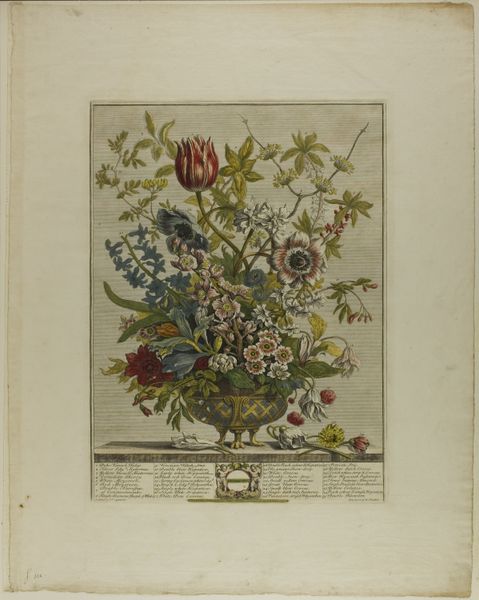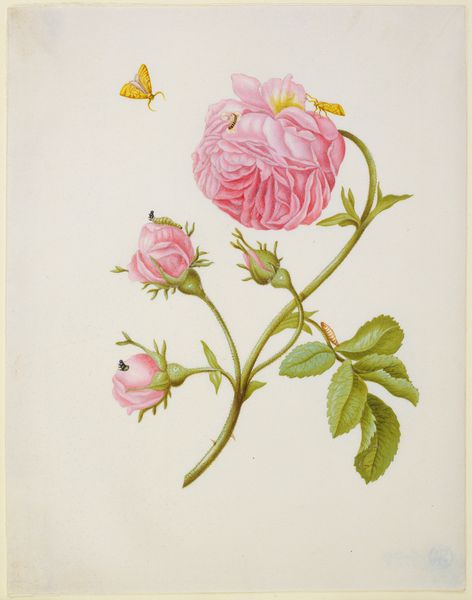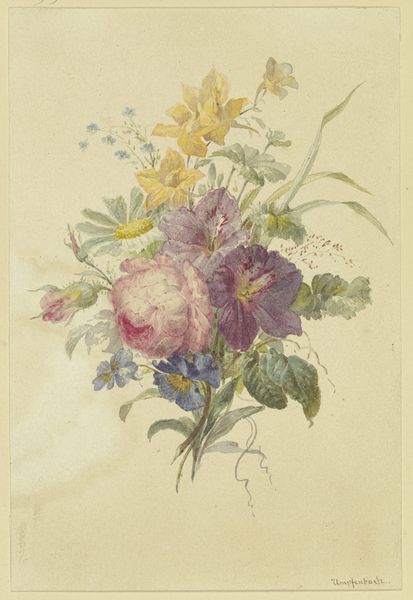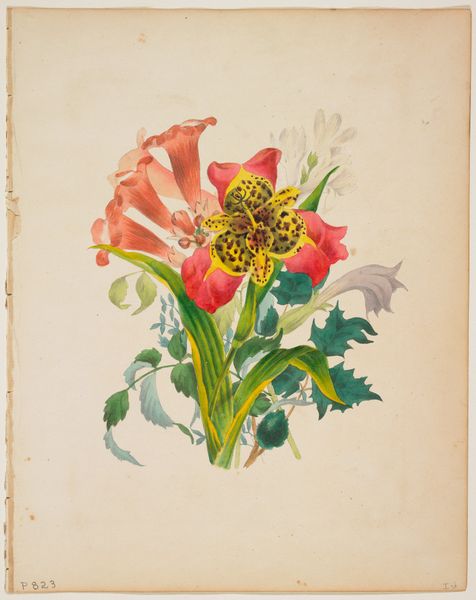
drawing, painting, print, ceramic, paper, watercolor
#
drawing
#
painting
# print
#
ceramic
#
paper
#
watercolor
#
ceramic
#
botanical art
#
watercolor
Dimensions: 13 x 10 in. (33.02 x 25.4 cm) (plate)
Copyright: Public Domain
Curator: What a delicate and charming piece! It evokes a sense of tranquil observation. Editor: Indeed. We're looking at "Dwarf Double Poppy", a work dating back to 1793 and housed here at the Minneapolis Institute of Art. The artist, John Edwards, employed watercolor on paper, combined with ceramic elements to craft this beautiful botanical illustration. Curator: Ceramic? It seems almost anachronistic given the supposed delicacy. I want to hear more about how he combined ceramic material into paper and watercolour medium to generate such exquisite and tender quality. Was this botanical art intended purely for aesthetic appreciation, or did it serve a functional, perhaps even pedagogical, purpose? Editor: It likely played multiple roles. Edwards was working within a period deeply interested in scientific illustration, driven by colonial exploration and an increasing effort to classify the natural world. Consider the rise of institutions such as the Royal Botanic Gardens, Kew, at that time, which actively collected and documented flora from across the globe. These images became currency in establishing power in the era. Curator: So, it is enmeshed with power dynamics in colonial landscape. I notice the print has an unusual frame. It’s more complex than a standard floral watercolour. I wonder about the labour processes to extract ceramic material. Was this print from Edwards' studio intended for scientific use or luxury consumer market? What was his intended purpose? Editor: That gray oval surrounding the poppies isn’t just decorative; it defines the space within which Edwards presents his carefully rendered specimens. Edwards was most likely crafting pieces for an increasingly bourgeois audience keen to decorate their homes with fashionable, natural history-inspired imagery. Curator: It’s a testament to how seemingly simple artwork reveals so much about the social forces and systems that shaped its creation and consumption. From horticultural interest to home display, and, perhaps, into a colonial, economic resource through classification. I look at it very differently now. Editor: And I am struck anew by Edwards' masterful control of the watercolor medium—the subtle shading, the vibrant colors – a harmonious marriage of observation and artistic skill! I feel like its charm is timeless.
Comments
No comments
Be the first to comment and join the conversation on the ultimate creative platform.
